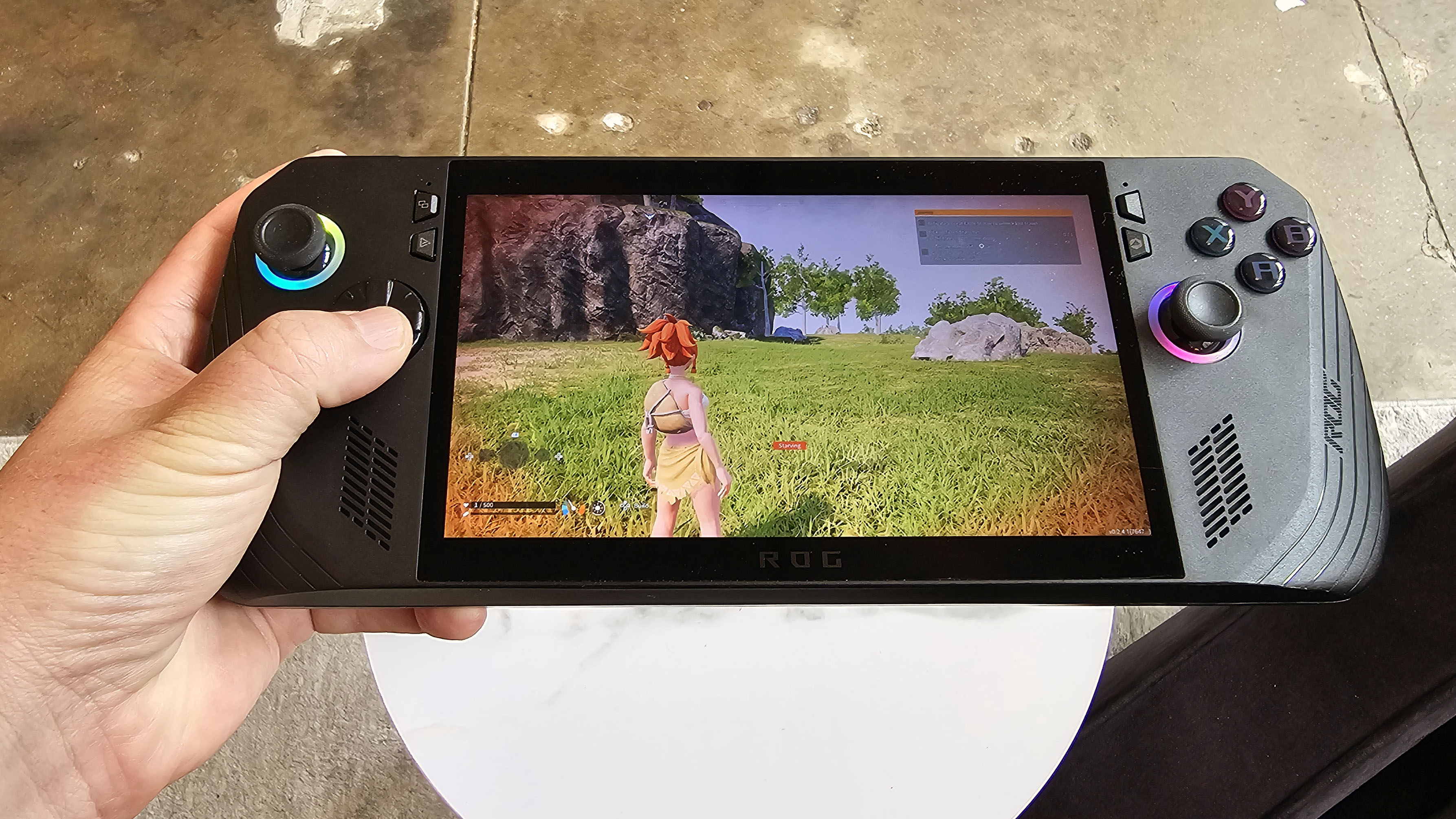
Asus made its updated ROG Ally X official last month, while also spilling details on many of its improved specs. But at a Computex preview event last week, we spent some time with the beefed up handheld, and it's clear that this is a serious overhaul from Asus.
Aside from a doubling of the battery capacity, the Ally X sports a 1TB M.2 2280 SSD, a step up to 24GB of LPDDR5-7500 RAM, and a completely redesigned black shell. You also get deeper handles, and a slightly tweaked button and stick arrangement for better ergonomics, and smaller macro buttons on the back to help avoid accidental presses.
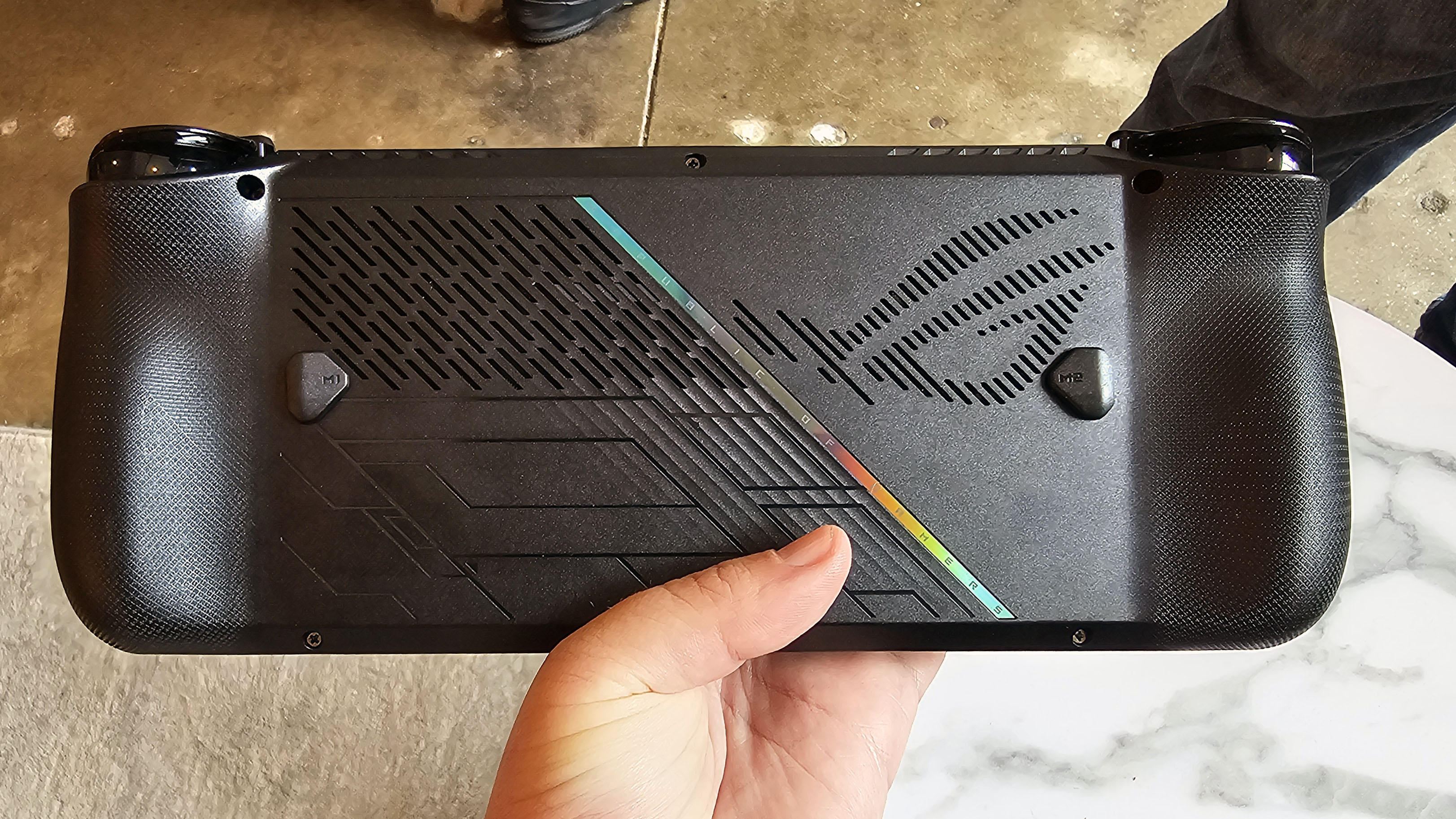
While most games won't need more than 16GB of RAM at these settings and 1080p resolution, keep in mind that the APU needs to allocate its video memory from the RAM pool. So 24GB means there's more to share between the OS and your games. And in theory, the speed bump up from 6400MT/s on the Ally and 7500MT/s on the Ally X could mean slightly higher game frame rates. Of course we'll need to spend some serious time with a review unit to know for sure.
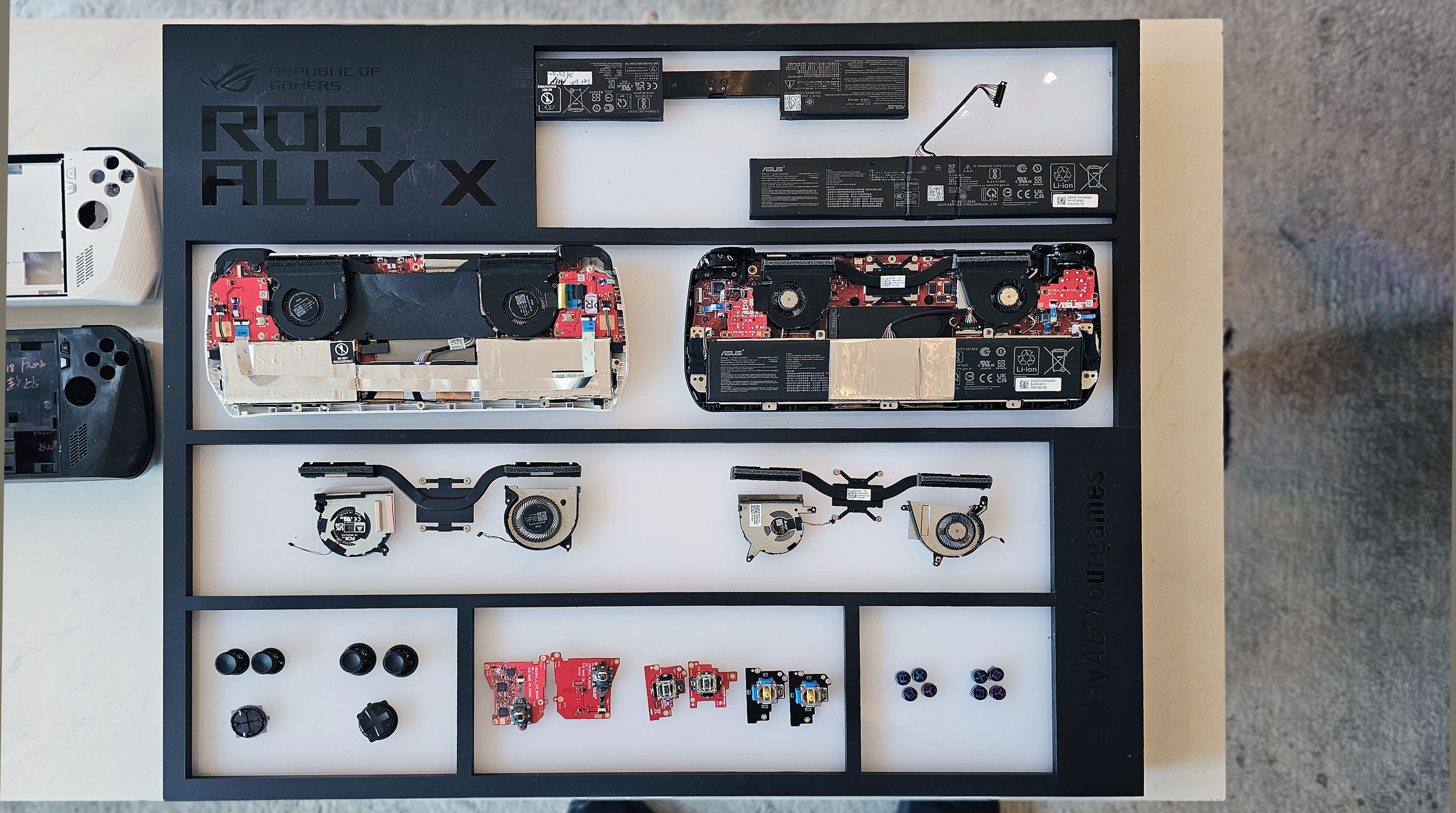
The joystics are also new, with stiffer springs and a longer 5-million cycle rating. They're also easier to replace, and Asus was showing off a third-party hall effect option for those inclined to swap in third-party components. The D-Pad is also tweaked with the aim of making it more precise for retro and fighting games, and the XG Mobile port has been replaces with a second USB-C Thunderbolt-compatible USB4 port up top, to support more external docks.
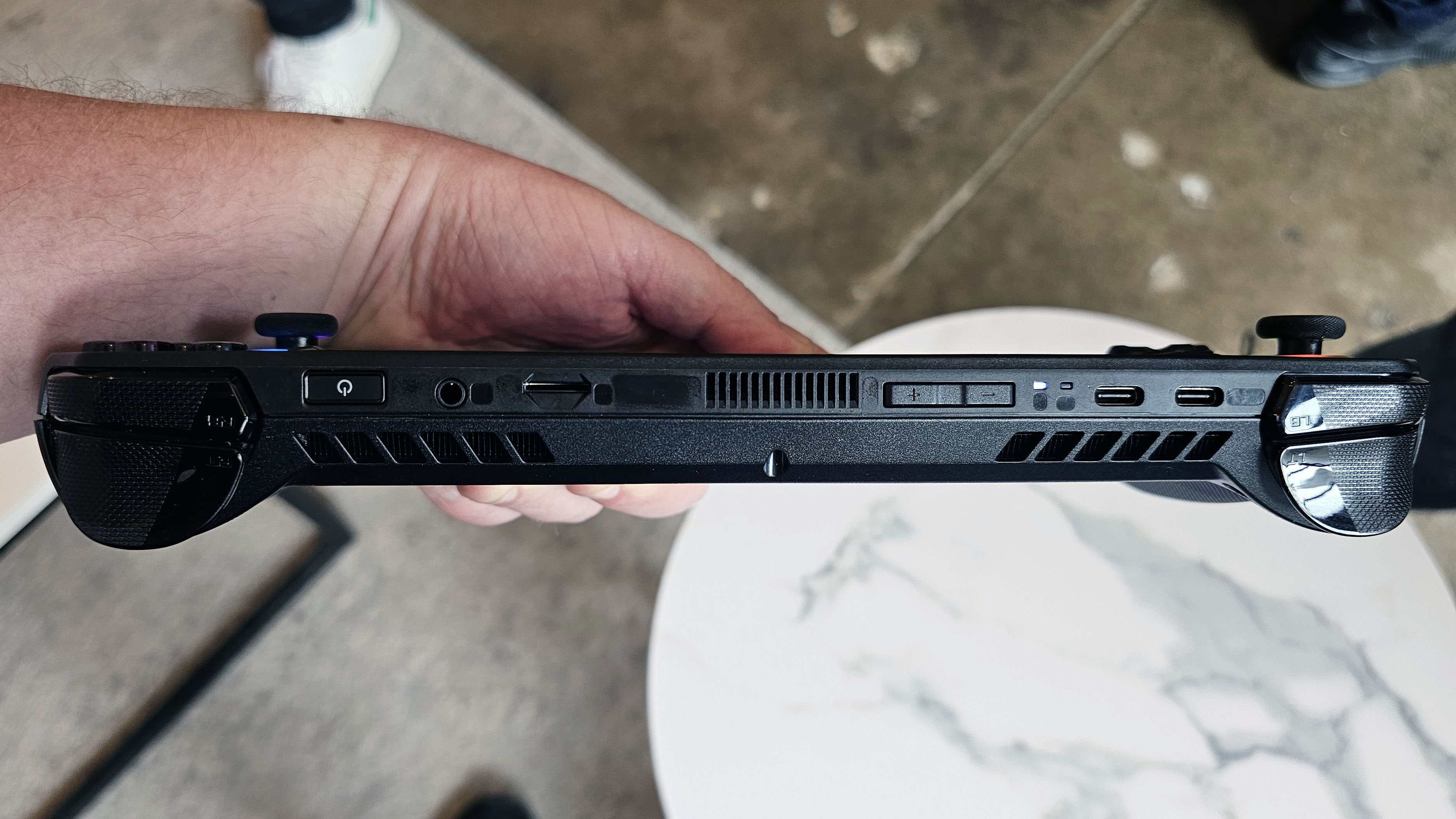
Given all those additions, and especially the bigger battery, it's not surprising that the Ally X is thicker and heavier than the Ally. But at 1.49 pounds, it's just 0.15 pounds heavier than the original Ally. One way Asus accomplished this was to make the shell lighter. The company had the old and new shells on hand and the Ally X model was noticably lighter. Time will tell if there are any drawbacks to this in terms of durability, but the Ally X didn't have any nopticable flex or other similar issues in our brief time with it.
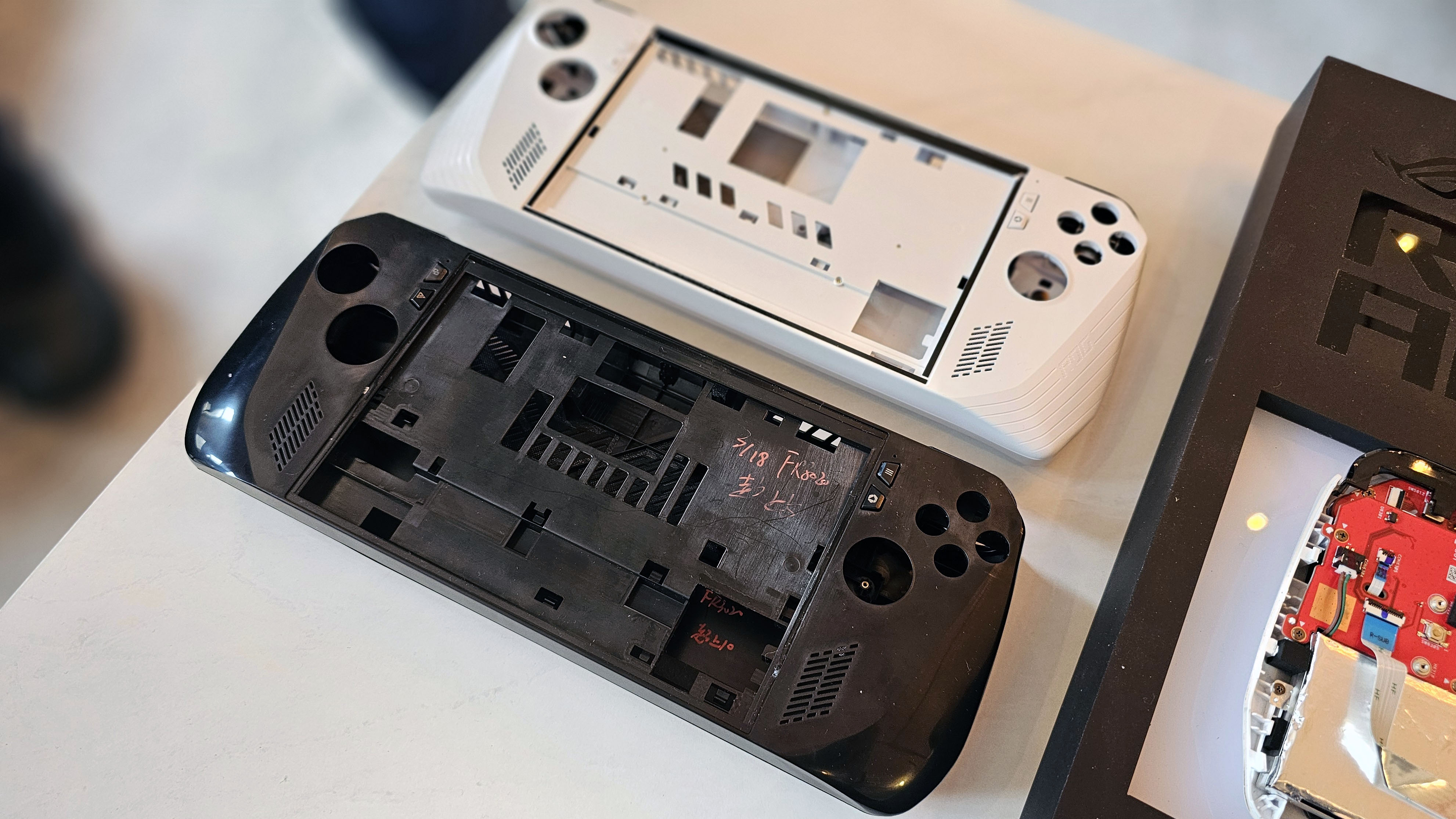
Asus also overhauled the cooling, which is good given the issues many have had with heat and the microSD card slot. To make room for the larger battery, Asus made its fans smaller. But the blades are now reportedly 50% thinner, and there are more of them, to achieve better airflow. There are also new thermal tunnels in the housing to push up and out toward a new third exhaust on the top edge. Hopefully, this directs heat away from the steamy microSD slot area. Asus says it results in 24% more air being moved through the Ally X, making even the touch screen up to 6 degrees Celsius cooler.
While many of these changes are arguably minor, there are a lot of them, and they add up to a device that feels like a major upgrade from the original model. But it also costs $100 more than the Z1 Extreme model of the original Ally. The Asus ROG Ally X should be available to preorder at Best Buy by the time you read this, for $799. Personally, if I already owned a handheld that I was happy with, I might consider holding out for a next-gen chip from AMD (or Intel, I guess) with better gaming performance (and hopefully improved efficiency).
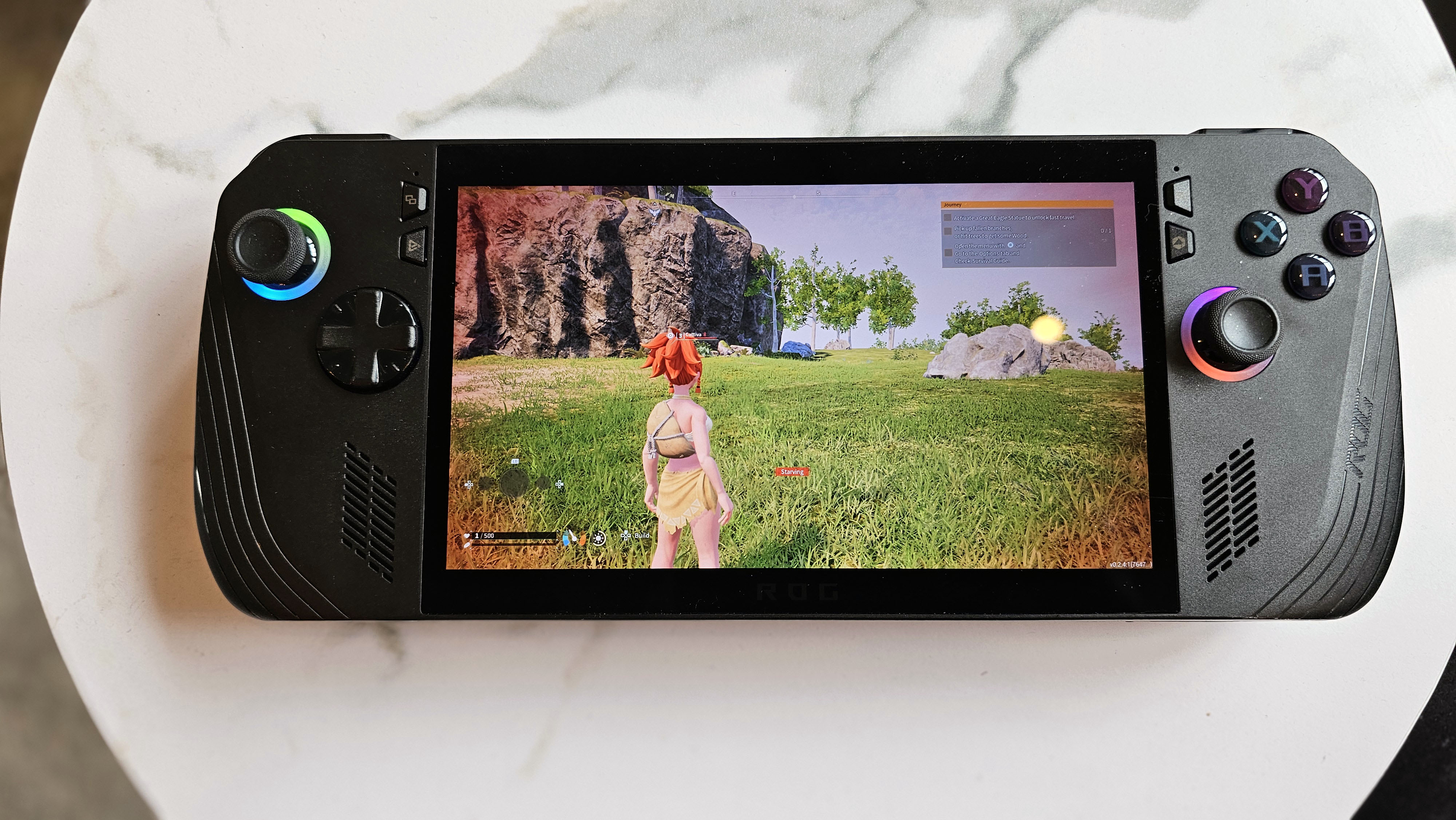
But if you want a premium gaming handheld soon and you like the idea of one running Windows 11 to make it easier to play games from stores other than Steam, the Ally X makes a good argument for itself. Now, if only the company could improve its reputation when it comes to RMAs, it might have a big hit on its hands with this substantially updated gaming handheld.







